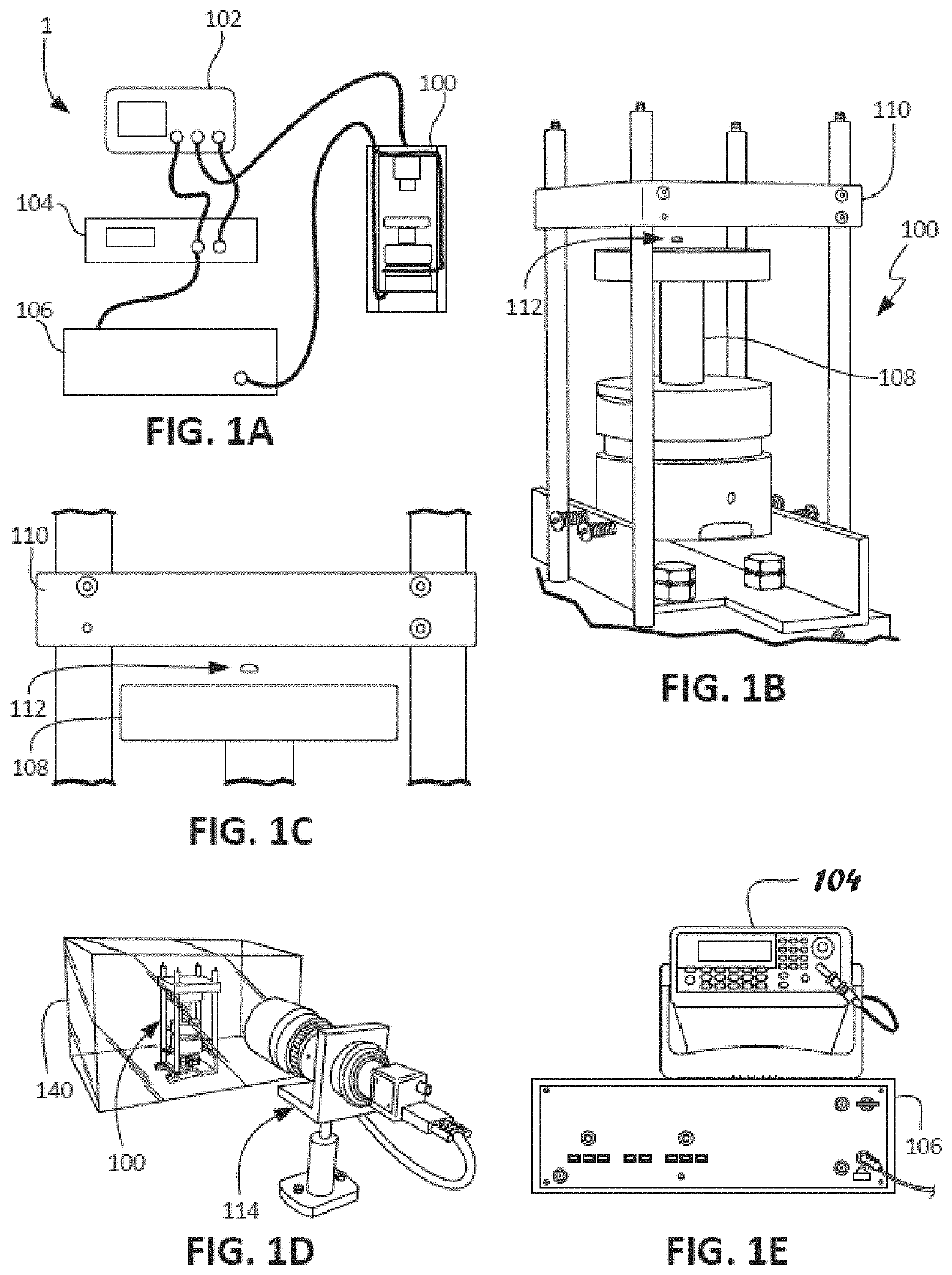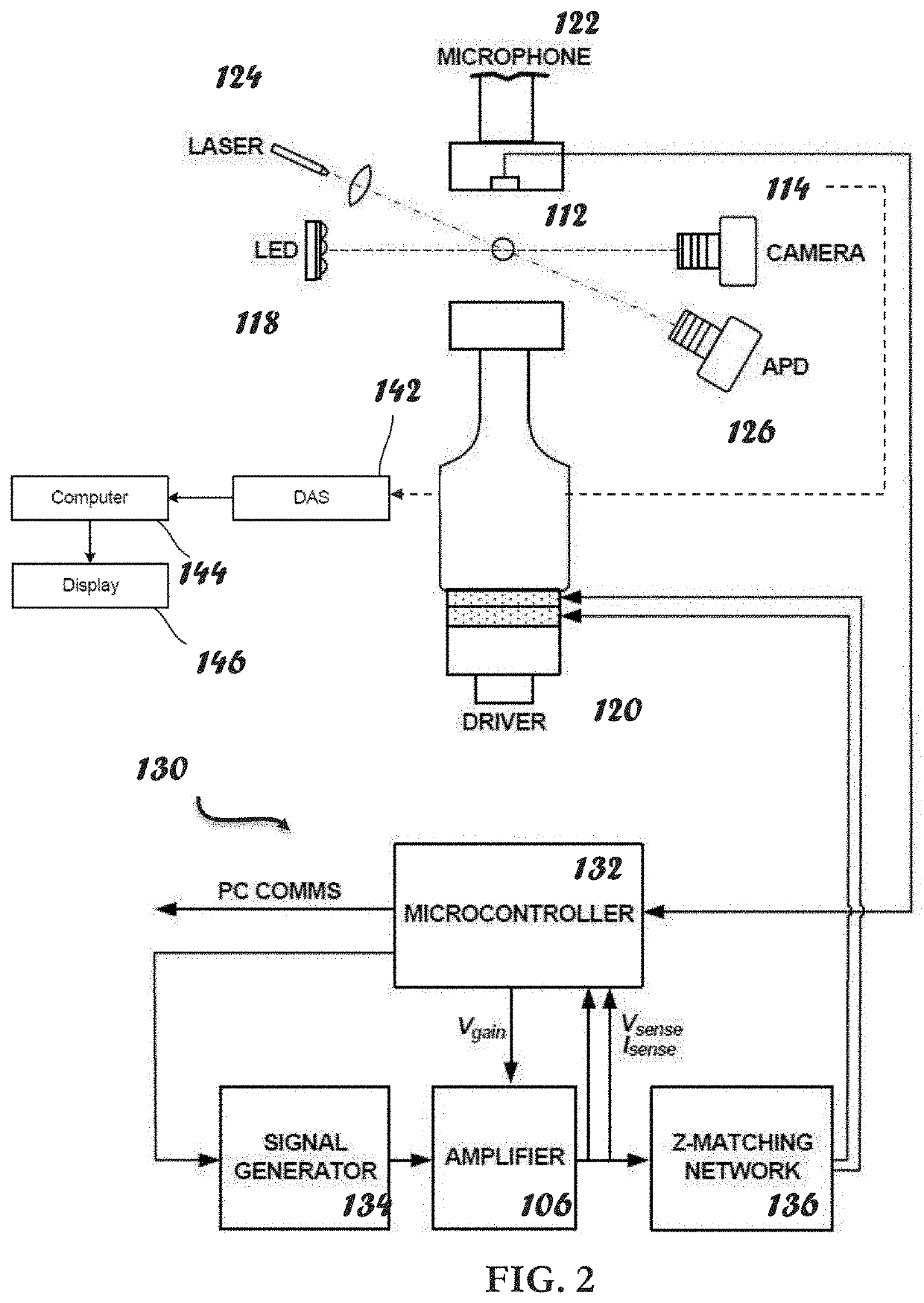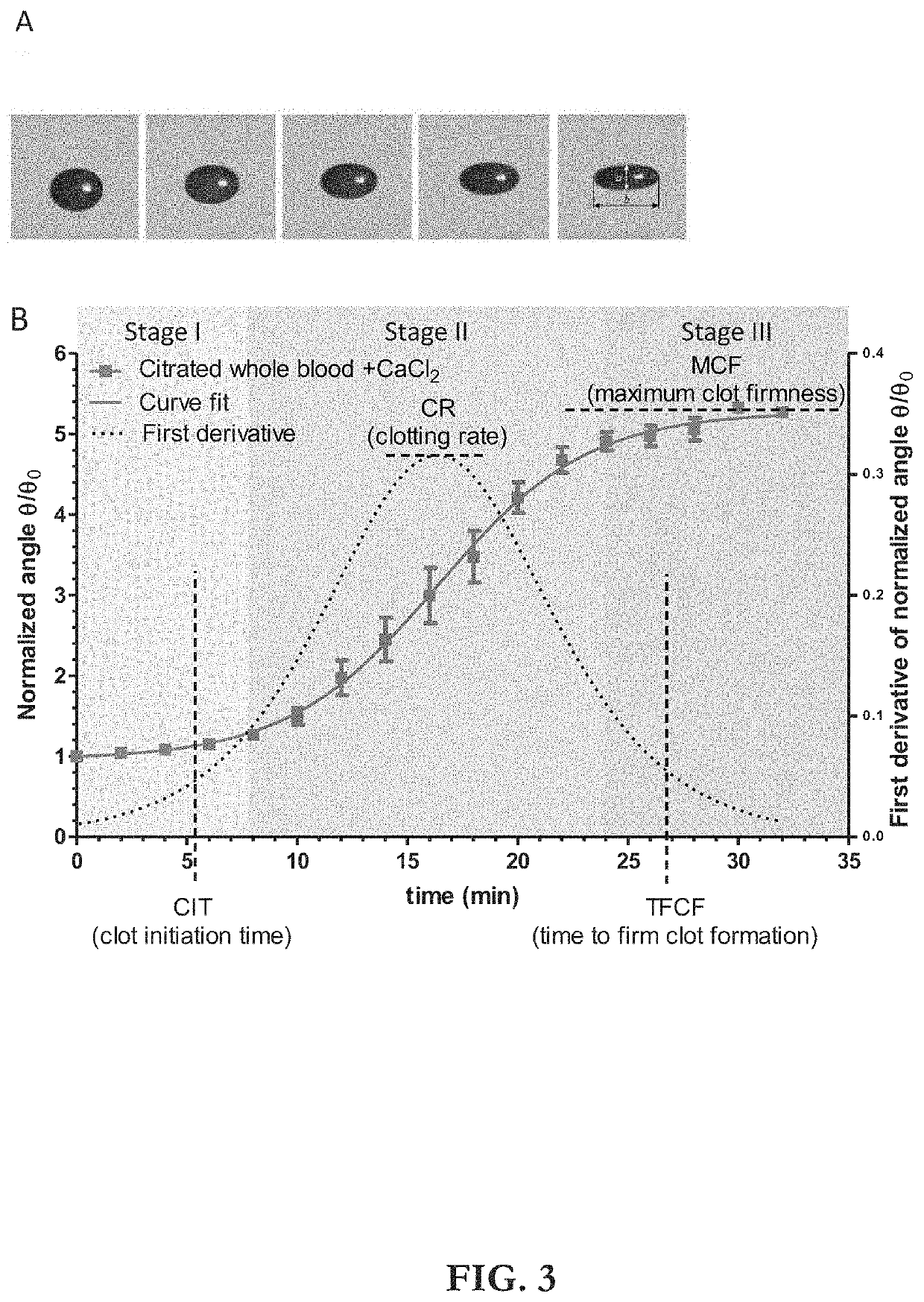Apparatus, Systems And Methods For Integrative Photo-Optical/Mechanical Test For Noncontact Measurement Of Polymerization
a non-contact, photo-optical/mechanical technology, applied in the direction of measurement devices, instruments, material analysis, etc., can solve the problems of large measurement errors, significant increase in patient morbidity and mortality, and the need for significant time for obtaining diagnostic data of parameters using available contact techniques
- Summary
- Abstract
- Description
- Claims
- Application Information
AI Technical Summary
Benefits of technology
Problems solved by technology
Method used
Image
Examples
example 1
tic Acoustic Tweezing
[0087]Quasi-static experimental procedure. Samples (˜4 μL nominally) were deployed manually into a pressure minimum of the standing wave using a gastight 100 μL glass syringe (Hamilton 7656, Reno, Nev.) with a polytetrafluoroethylene-coated stainless steel blunt-tipped needle (Hamilton 8646).
[0088]In an implementation of a quasi-static experiment, the input is fixed at 400 mV, with frequency starting around 29.5 kHz, which is always lower than the resonant frequency. In these implementations, sample deformation is induced by increasing the standing wave pressure amplitude. This is accomplished by slowly tune up frequency towards the resonant frequency. In the beginning of the experiment, according to this implementation, a sample drop is injected into the pressure field by syringe, an increased pressure is applied to trap the sample in the central area while pulling out the syringe. After the drop is levitated, the pressure will be decreased to an aspect ratio o...
example 2
ation of Drop Size, Deformation and Location
[0092]Location and shape deformation of tweezing samples were obtained by analyzing the image sequences using a custom program written in MATLAB (Mathworks, Natick, Mass.) which relied on the MATLAB image processing toolbox. The analysis began with edge detection using a modified Canny method, as has been previously described. The “blob analysis” tools within MATLAB were then used to find the centroid of the drop and quantify deformation as an aspect ratio (width b / height a, cf. FIG. 3A). Location was measured as a vertical distance from the sample centroid to a fixed location on the apparatus. This Example plots location, a measure of the acoustic stress applied to the drop to lift it, as a function of aspect ratio, a measure of the strain resulting from the applied acoustic stress (FIG. 3B). The effective stress / strain curve shape begins at low aspect ratio, where the location increases approximately linearly with aspect ratio until the ...
example 3
on of the Quasi-Static Acoustic Tweezing Method to Biological Polymers to Measure the Changes in Rheological Properties
[0093]When gelatin or alginate are diluted in water, they form hydrogels characterized by much higher bulk elasticity that the initial solutions of these polymers. FIGS. 3A-3B and 4A-4D demonstrate that quasi-static deformation tests can capture changes in the sample elasticity during gelation of those proteins.
[0094]Methods. In one Example, two gel mixtures were used: 300-bloom gelatin from porcine skin (Sigma-Aldrich) and sodium alginate (Sigma Aldrich). Gel solutions were prepared by hydrating gelatin or sodium alginate in distilled water for ten minutes, then adding boiling distilled water to achieve the desired concentration. Calcium carbonate CaCO3 (Sigma-Aldrich) in combination with 6% (w / w) D-(+)-Gluconic acid δ-lactone (GDL, Sigma-Aldrich) was used as a source of calcium ions to initiate gelation of sodium alginate. The molar ratio of a basic calcium ion to...
PUM
 Login to View More
Login to View More Abstract
Description
Claims
Application Information
 Login to View More
Login to View More - R&D
- Intellectual Property
- Life Sciences
- Materials
- Tech Scout
- Unparalleled Data Quality
- Higher Quality Content
- 60% Fewer Hallucinations
Browse by: Latest US Patents, China's latest patents, Technical Efficacy Thesaurus, Application Domain, Technology Topic, Popular Technical Reports.
© 2025 PatSnap. All rights reserved.Legal|Privacy policy|Modern Slavery Act Transparency Statement|Sitemap|About US| Contact US: help@patsnap.com



